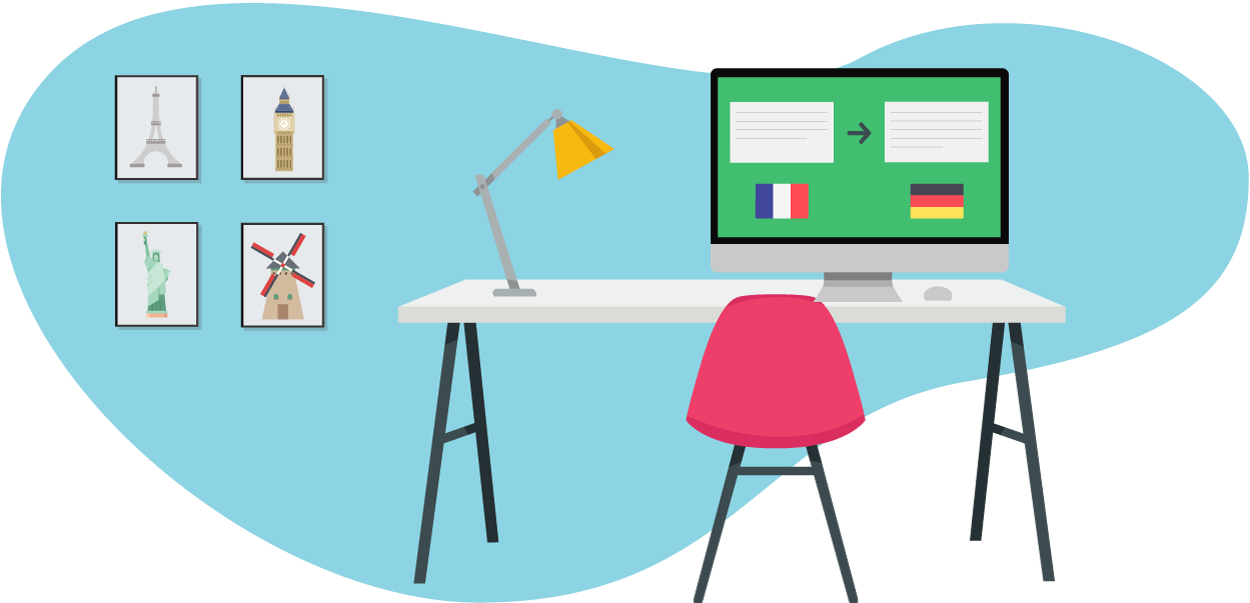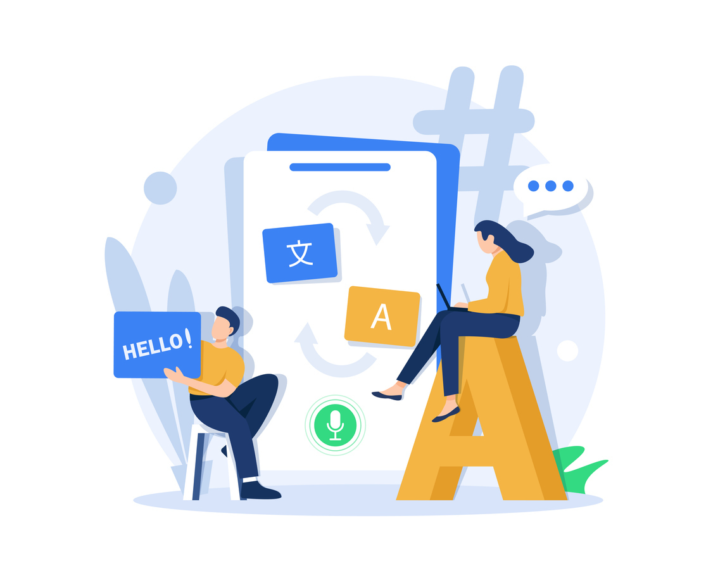The impact of AI on the translation process
AI is having a major impact on all business sectors. And this includes translation. Thanks to artificial intelligence, professional translators are working faster and faster when they translate books, documents, blog posts and more. But what impact is AI having on the translation process? In this post, we’ll explore the role, benefits and limits of AI in translation.
AI’s role in translation
AI-powered translation tools can translate large amounts of data using advanced machine learning algorithms, and they can do it fast. Examples include Google Translate, DeepL and Smartcat.
These tools analyse the source text and translate it into the target language within a few seconds. While the grammatical structure, syntax and meaning of the text are preserved, AI can make translation errors. This means it’s essential to carefully proofread a text translated by artificial intelligence before it’s published or delivered to a client.
Do professional human translators use AI?
Even the most seasoned human translators use AI-powered tools to boost their performance. Notably, neural machine translation with post-editing is a two-stage system that produces an understandable text suitable for the reader.
Stage one
First, a text is translated by an AI-powered tool.
Stage two
Second, the machine translation is carefully reviewed by a proofreader qualified in their mother tongue. This removes all the flaws and inconsistencies.
The advantages of AI translation
Reduced costs
Using AI, businesses obtain increasingly exact translations quickly and in significant volumes. Although these translations require humans at key moments in the translation process, less human labour is needed than when everything was translated manually. AI therefore helps businesses ordering translation save considerable money.
Speed
Translators now have useful tools (translation memories, interactive translation glossaries and post-edited machine translation) that save them valuable time in their everyday work. As a result, translations take less time.
Increased translator productivity
Machine translation can quickly translate large volumes of content, which increases translator productivity.
The limits of artificial intelligence in translation
Accuracy
Tools powered by AI often struggle to understand a text’s context, which can generate errors and mistranslations in the target text.
Missing cultural nuances
Machine translation systems find it hard to translate cultural nuances, idioms and common expressions. These linguistic subtleties depend on context and require human analysis and advanced cultural awareness.
Robotic style
Machine translation cannot provide the human touch readers expect. It doesn’t always flow, instead seeming robotic or jerky. Fortunately, human proofreaders can play their part to ensure the final text is pleasant to read.
AI and human translators: collaboration for excellence
Given the above, it’s clear that AI won’t replace translators, but will considerably simplify their work.
AI-powered tools will:
- Provide suggested translations
- Automate repetitive tasks
- Create terminology databases
This collaboration between AI and human translators makes the translation process flow better. It combines the benefits of AI automation with the human touch needed for cultural contextualisation and understanding the nuances of a text.
AI & the translation process: takeaways
At TextMaster, we use AI to create translation memories for each of our clients. A translation memory is a database that stores all your previous translations. This technology means text segments already translated can be reused, which prevents the same content being translated multiple times.
We also use post-edited machine translation (PEMT). In this process, a text is pre-translated by a machine. Then it is proofread by a professional human translator to make it understandable, as explained above.
However, it’s important to note that even with assistance from this technology, translations should always be checked by professional proofreaders and reviewers to guarantee information is correct and to eliminate errors.
Find out more in our guide to AI-generated translation.
Need to translate your website? Use TextMaster’s qualified translators. They will make sure your content is SEO-optimised.







